Attendance Sheet Samples
-
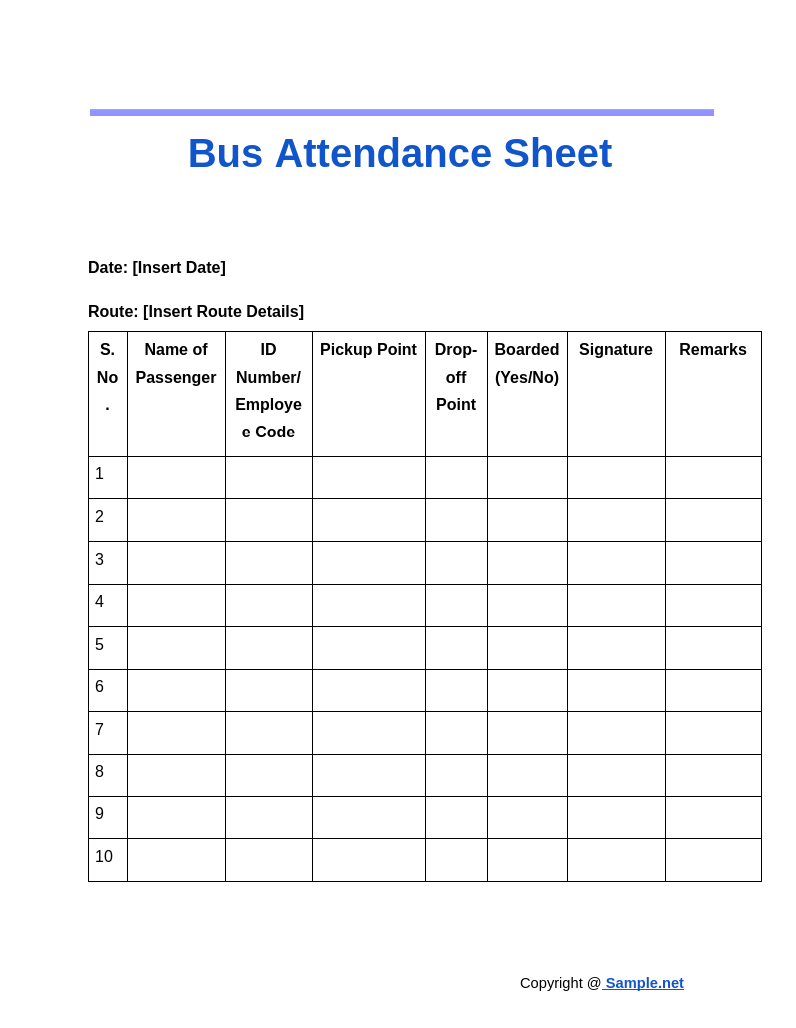
Bus Attendance Sheet
download now -
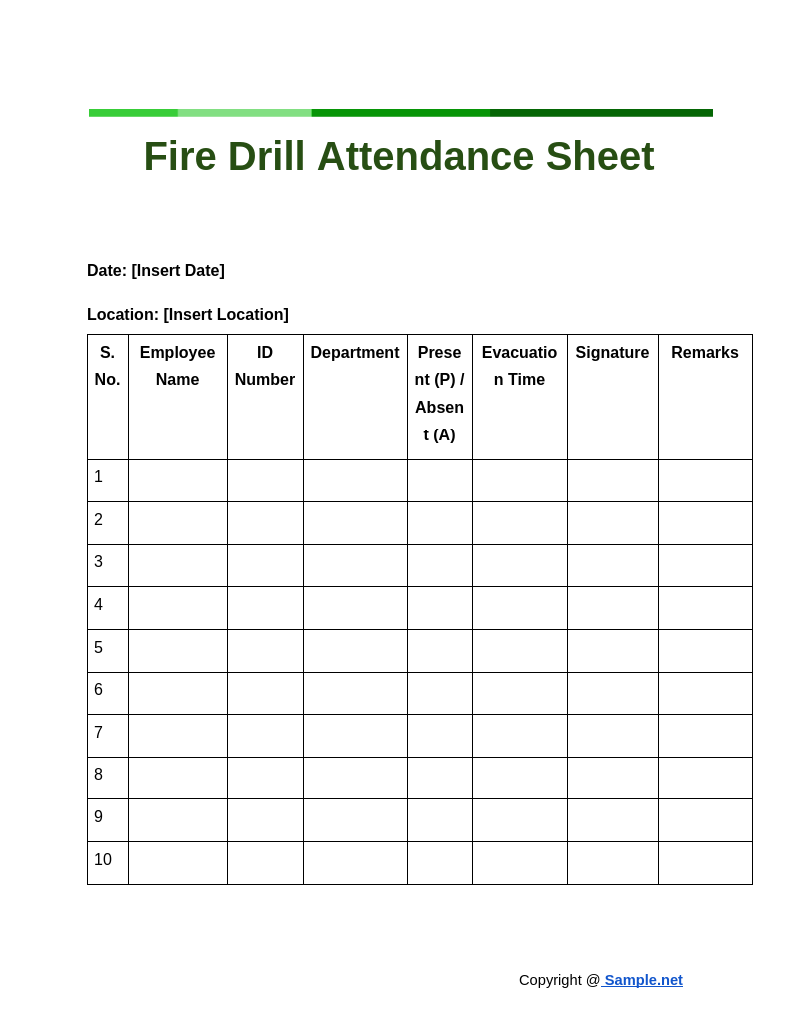
Fire Drill Attendance Sheet
download now -

Gym Attendance Sheet
download now -
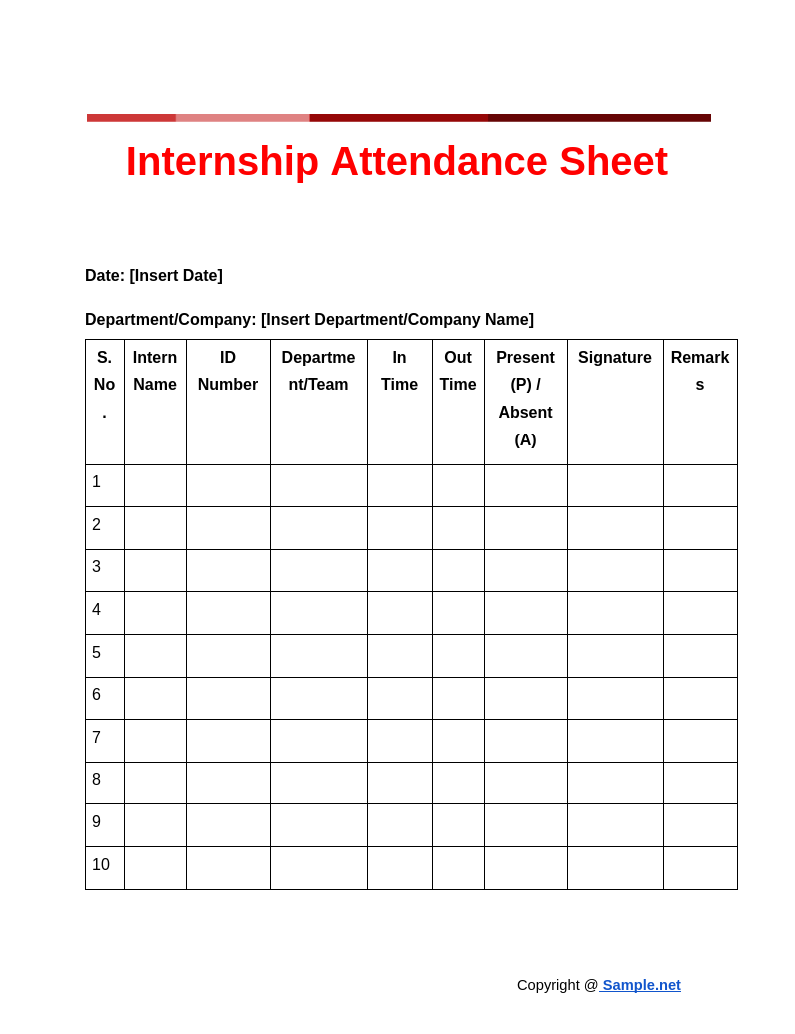
Internship Attendance Sheet
download now -
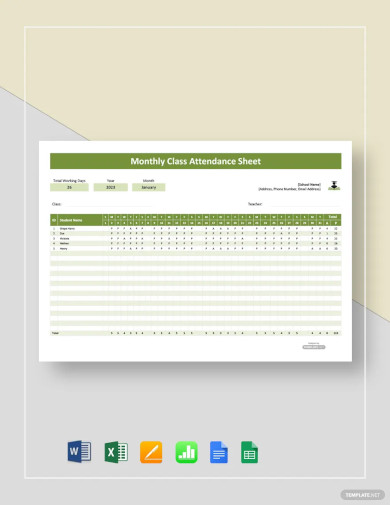
Monthly Class Attendance Sheet Template
download now -
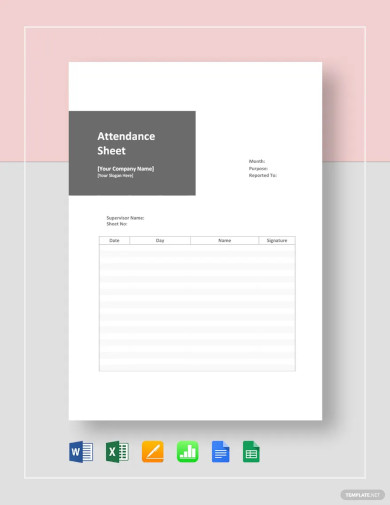
Attendance Sheet Template
download now -
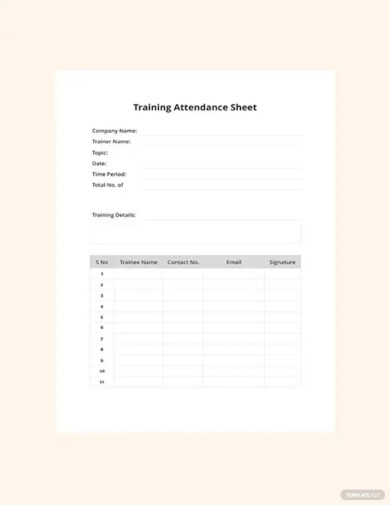
Training Attendance Sheet Template
download now -
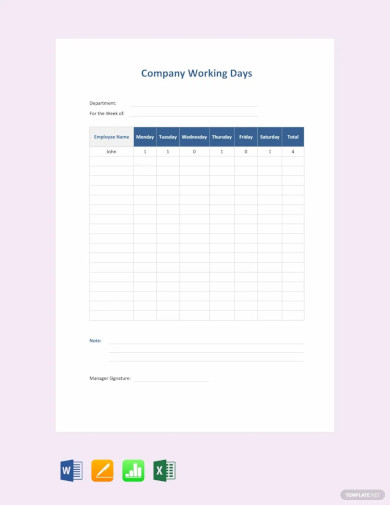
Company Attendance Sheet Template
download now -

Daily Attendance Sheet Template
download now -

Monthly Attendance Sheet Template
download now -
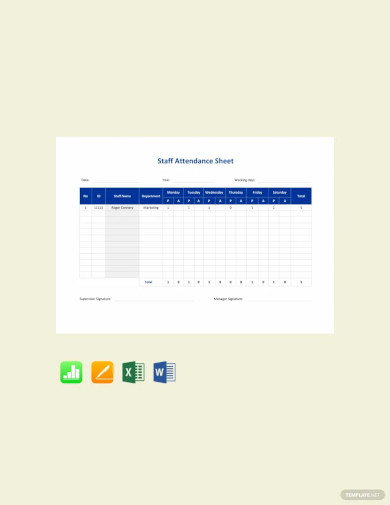
Staff Attendance Sheet Template
download now -
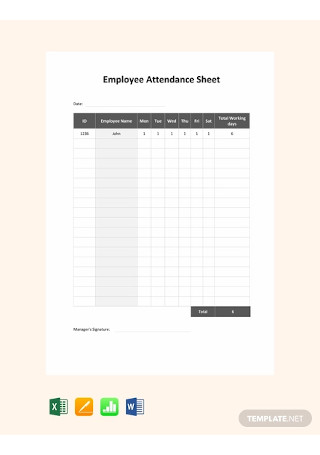
Employee Attendance Sheet Template
download now -
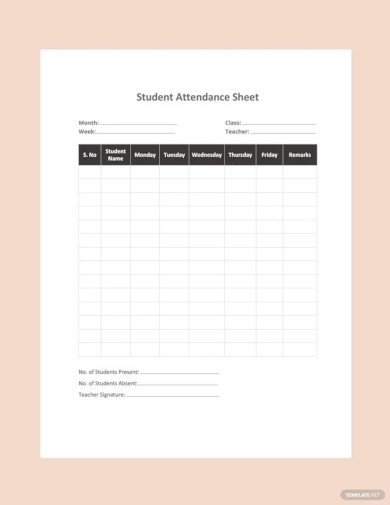
Student Attendance Sheet Template
download now -
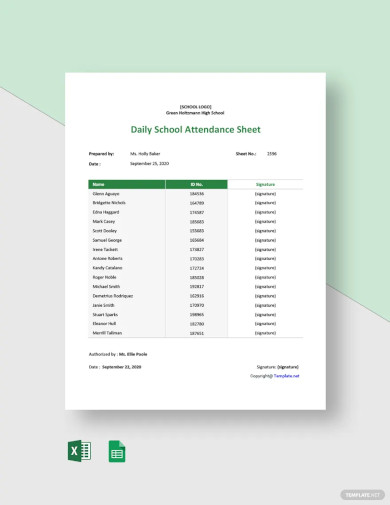
Daily School Attendance Sheet Template
download now -
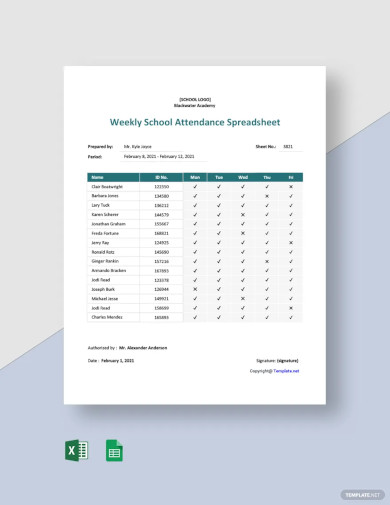
Weekly School Attendance Spreadsheet Template
download now -
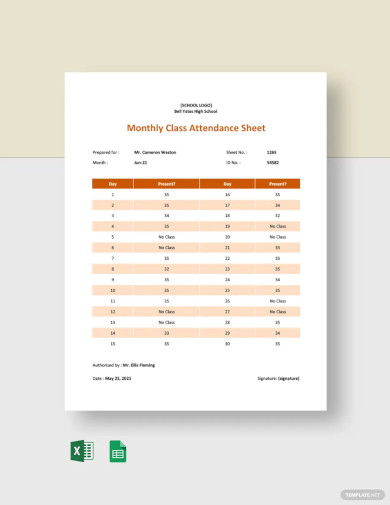
Free Monthly Class Attendance Sheet Template
download now -
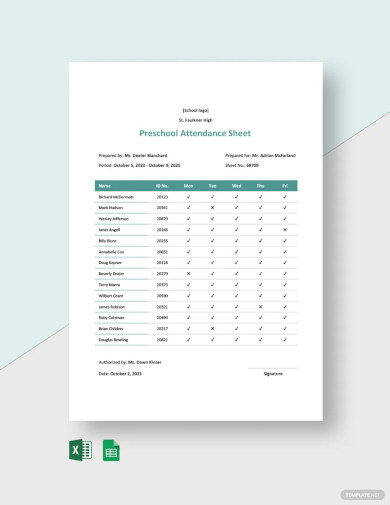
Free Preschool Attendance Sheet Template
download now -
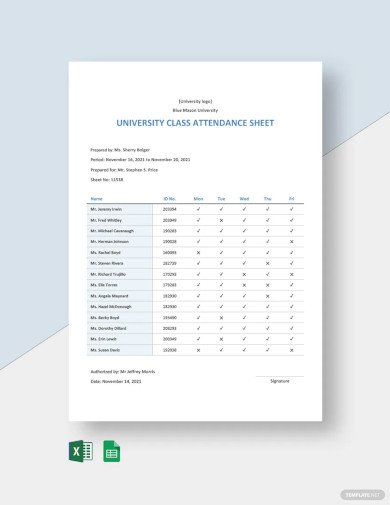
University Class Attendance Sheet Template
download now -
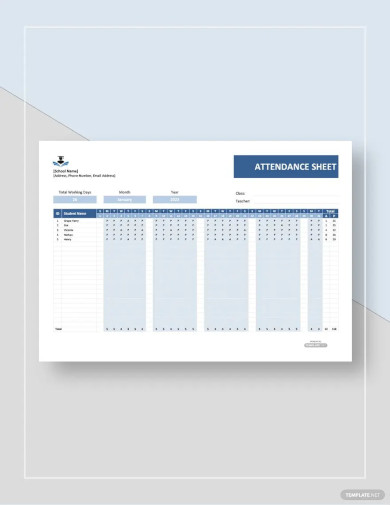
Yearly Attendance Template
download now -
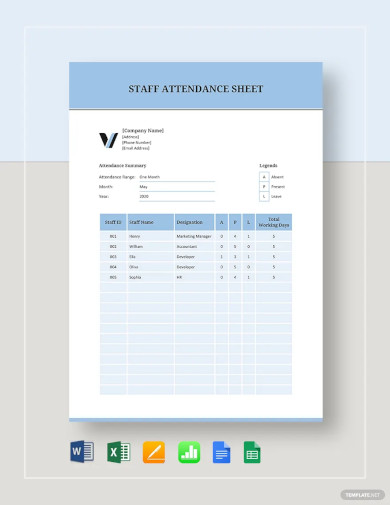
Free Sample Staff Attendance Sheet Template
download now -

Free Attendance Sign-in Sheet Template
download now -
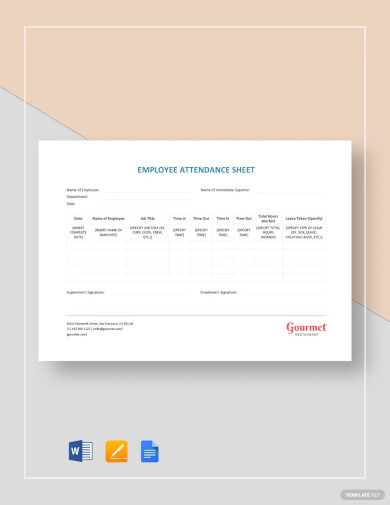
Employee Attendance Sheet Template
download now -
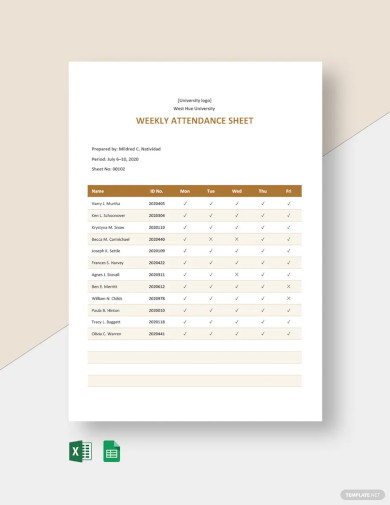
University Weekly Attendance Sheet Template
download now -

Basic Attendance Sheet Template
download now -
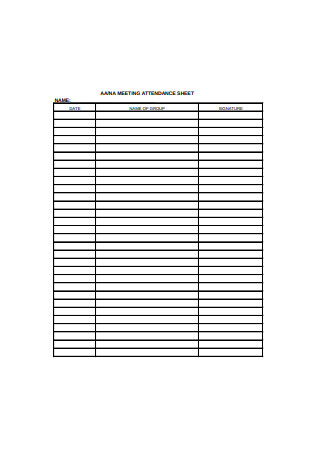
Meeting Attendance Sheet
download now -

Candidate’s Examinations Attendance Sheet
download now -
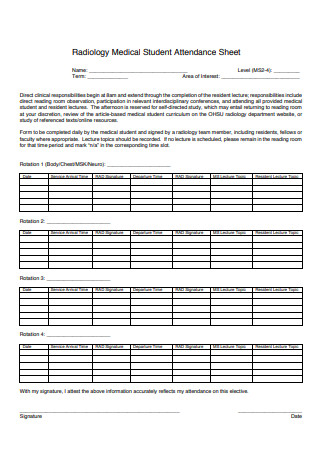
Radiology Medical Student Attendance Sheet
download now -
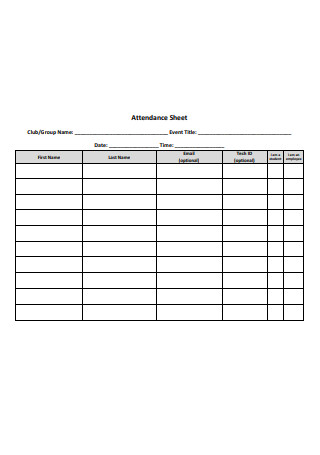
Sample Dance Attendance Sheet
download now -
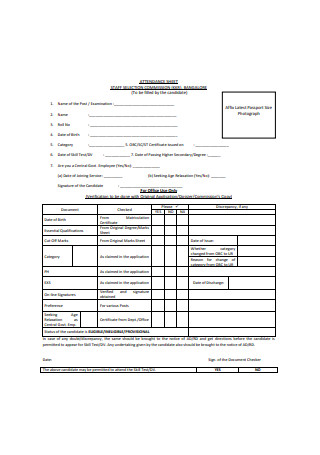
Sample Attendance Sheet
download now -
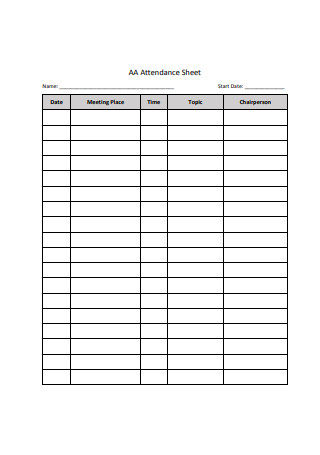
Elementary Attendance Sheet
download now -

Attendance Sheet for Participants
download now -
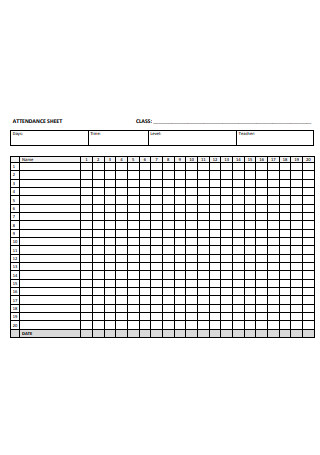
Simple Attendance Sheet
download now -
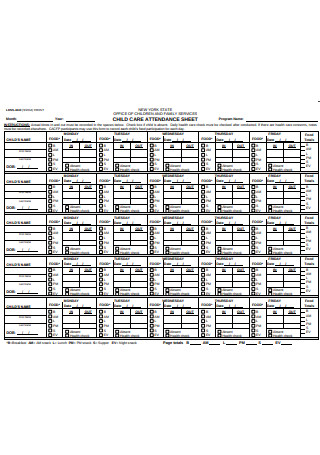
Child Care Attendance Sheet
download now -
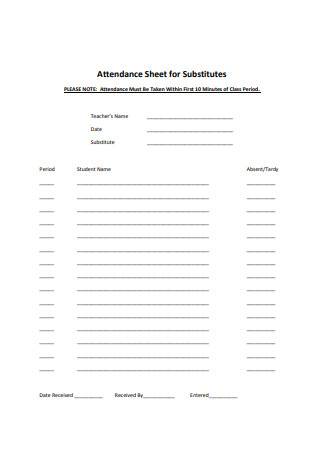
Attendance Sheet Format
download now -
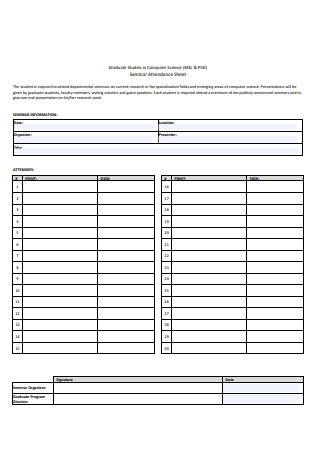
Sample Seminar Attendance Sheet
download now -
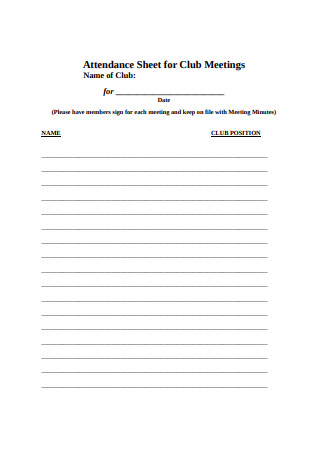
Attendance Sheet for Club Meeting
download now -
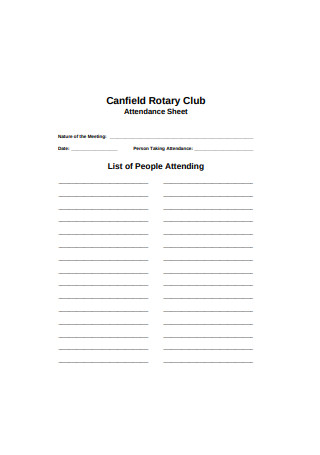
Cheer Attendance Sheet
download now -
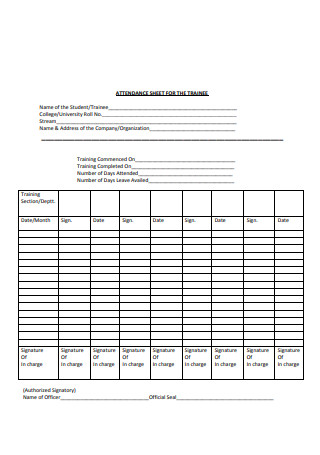
Attendance Sheet for the Trainee
download now -
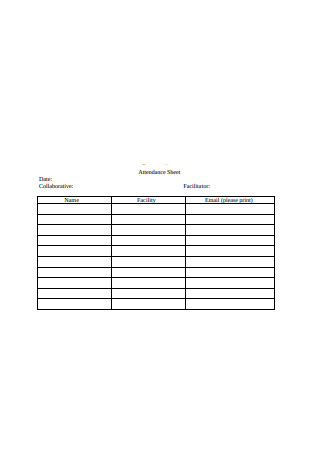
Attendance Sheet Example
download now -
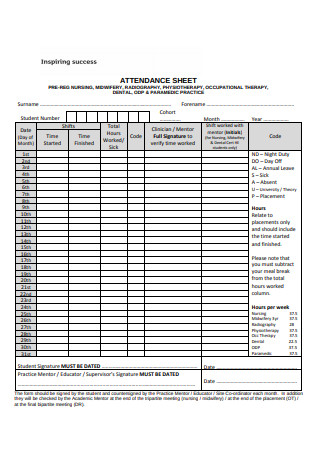
Printable Attendance Sheet
download now -
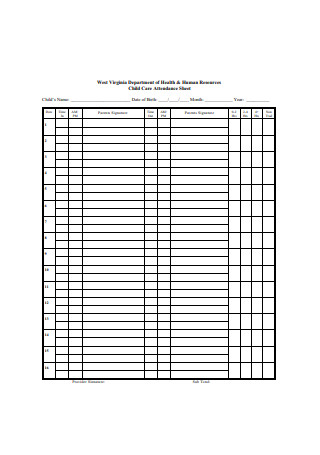
Editable Attendance Sheet
download now -
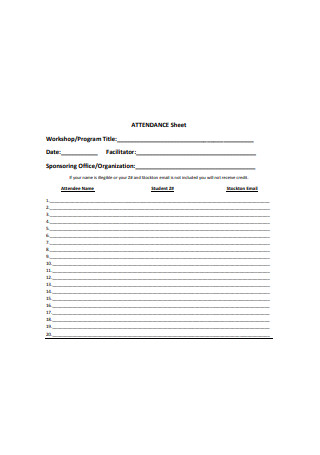
HomeSchool Attendance Sheet
download now -

Attendance Sign-in Sheet
download now -
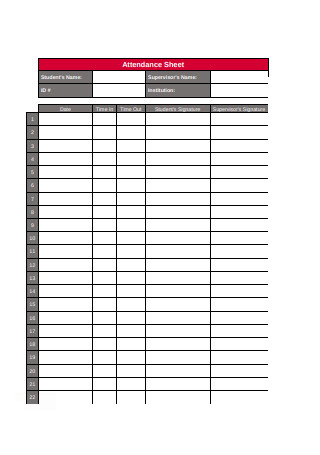
Sample Church Attendance Sheet
download now -
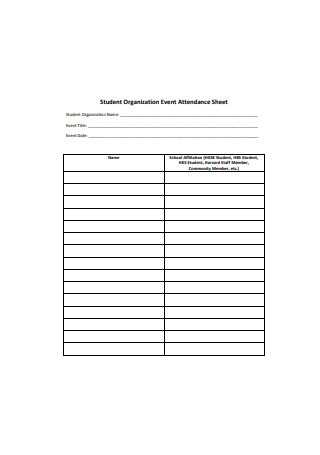
Student Organization Event Attendance Sheet
download now -
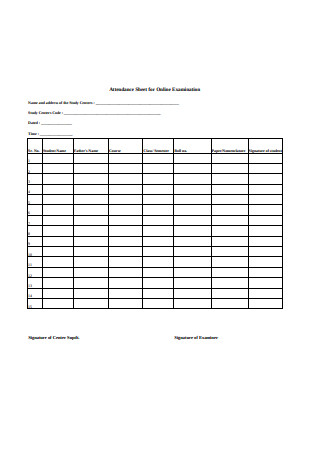
Attendance Sheet for Online Examination
download now -
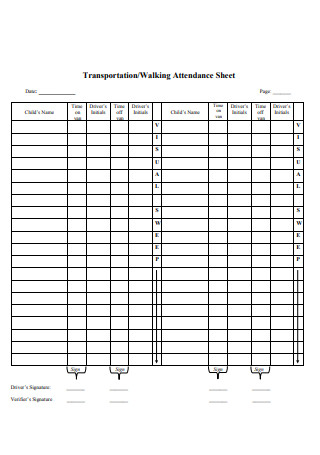
Transportation Attendance Sheet
download now -
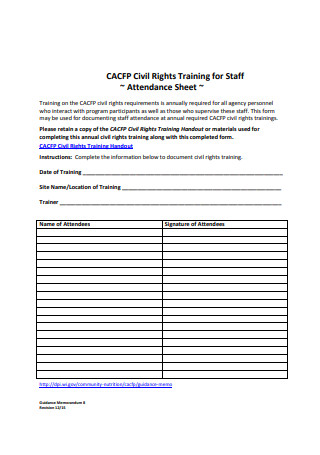
Training for Staff Attendance Sheet
download now -
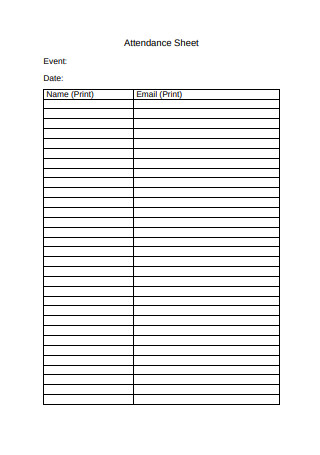
Teachers Attendance Sheet
download now -
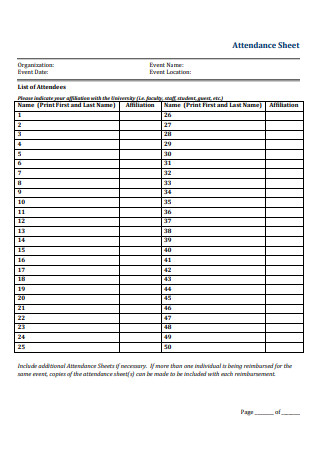
Sample Daycare Attendance Sheet
download now -
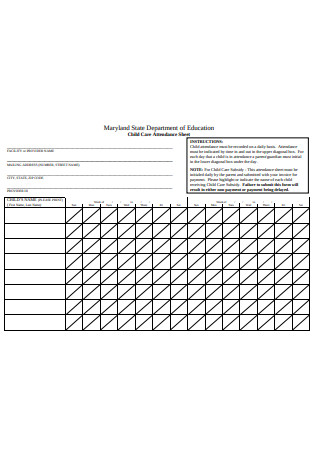
Sample Child Care Attendance Sheet
download now -
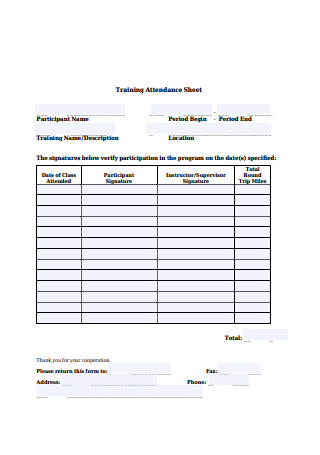
Training Attendance Sheet
download now -

Formal Attendance Sheet
download now -

Workshop Attendance Sheet
download now -
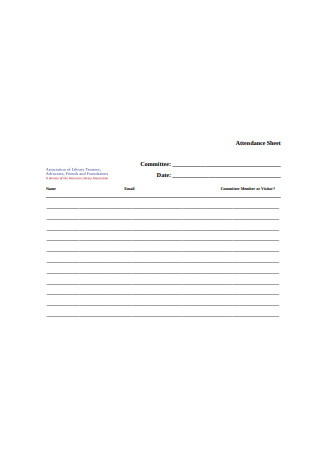
Committee Attendance Sheet
download now -
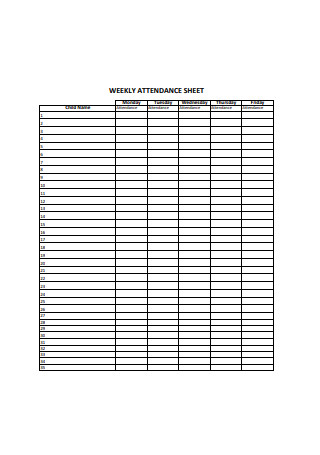
Weekly Attendance Sheet
download now -
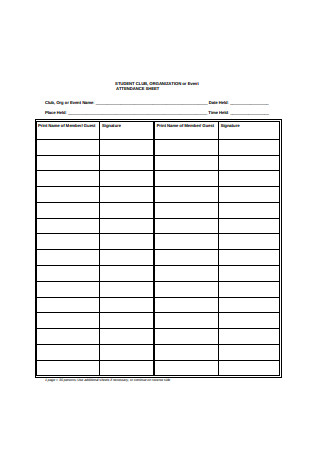
Student Club Event Attendance Sheet
download now -
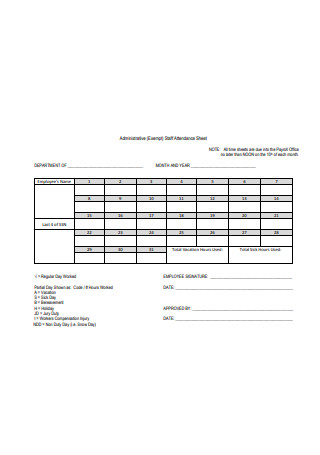
Sample Staff Attendance Sheet
download now -
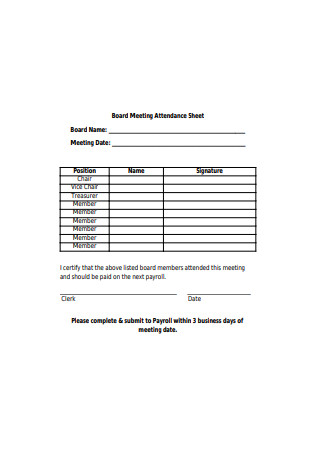
Board Meeting Attendance Sheet
download now -
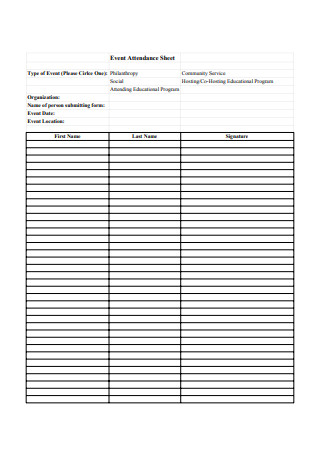
Event Attendance Sheet
download now -

Childcare Attendance Sheet Invoice
download now -
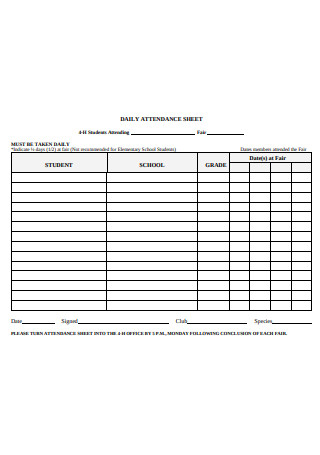
Daily Attendance Sheet
download now -
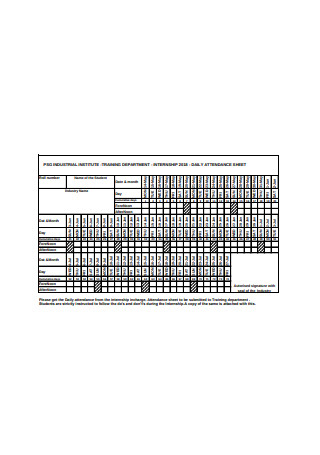
Sample Daily Attendance Sheet
download now -

Daily Work Attendance Sheet
download now -
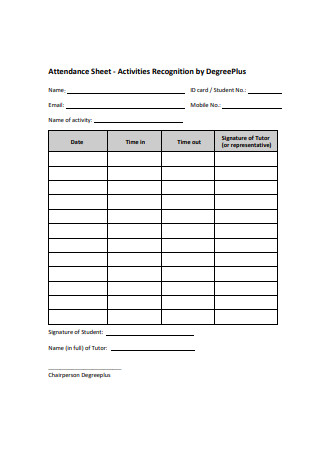
Blank Attendance Sheet
download now -
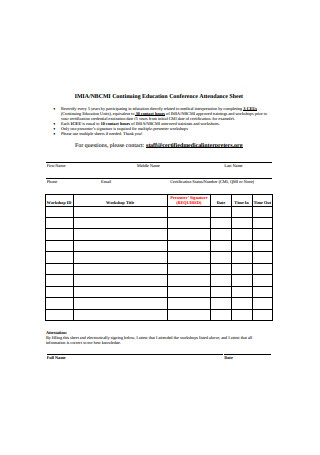
Conference Attendance Sheet
download now -

Sample Meeting Attendance Sheet
download now -
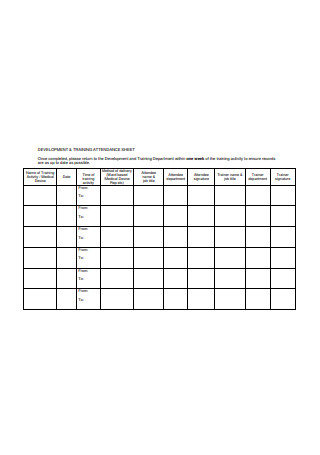
Classroom Attendance Sheet
download now -
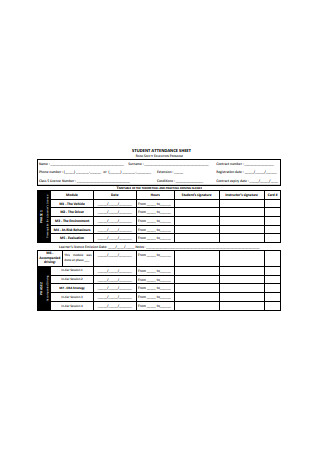
Student Attendance Sheet
download now -
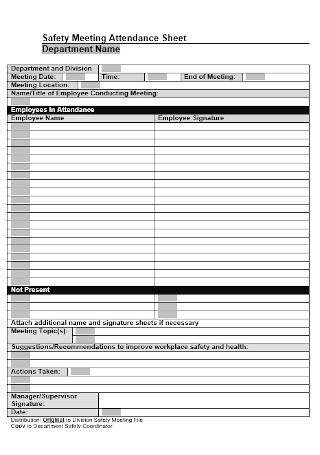
Safety Meeting Attendance Sheet
download now -
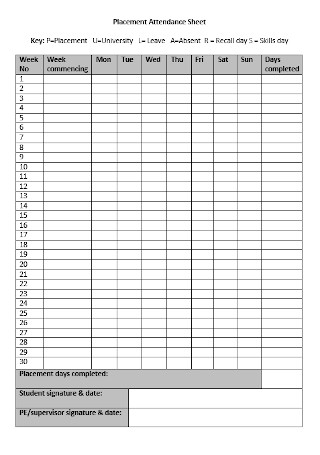
Sample Placement Attendance Sheet
download now -
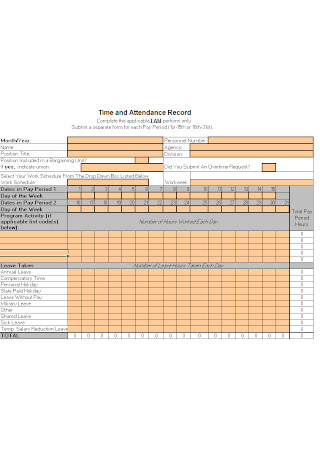
Time and Attendance Record Sheet
download now
FREE Attendance Sheet s to Download
Attendance Sheet Format
Attendance Sheet Samples
What is Attendance & Why Is It Necessary?
How Important Is Attendance?
Key Factors that Affect Attendance
How to Create an Attendance Sheet
FAQS
What is the primary purpose of an attendance sheet
Can an attendance sheet be digital
How often should an attendance sheet be updated?
Are attendance sheets legally required?
How can an attendance sheet improve employee performance?
What are the benefits of mobile app-based attendance sheets?
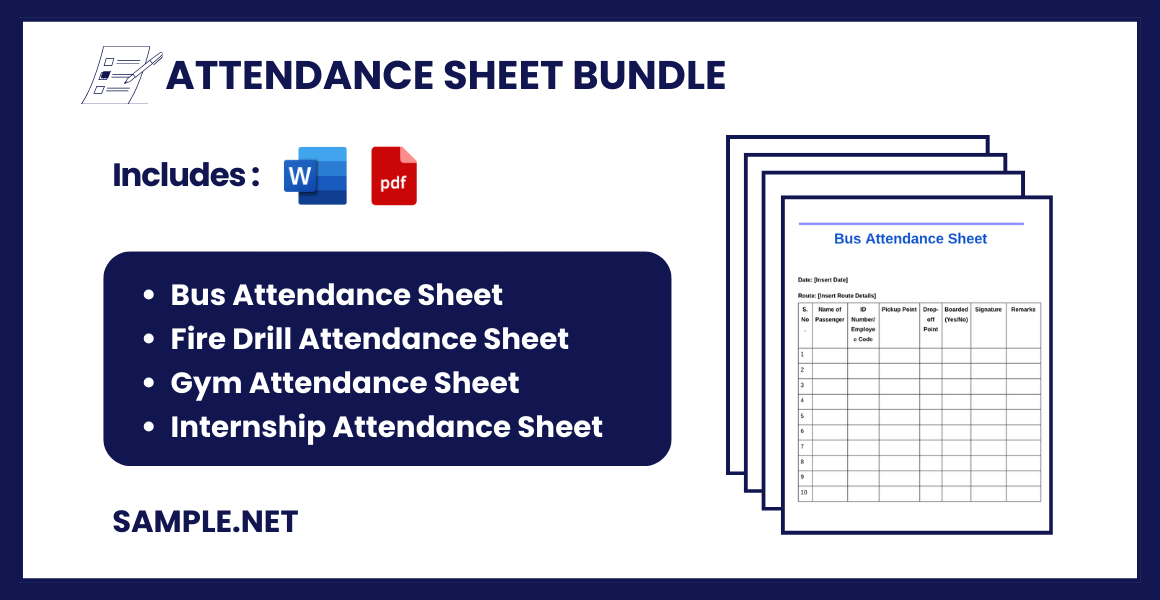
Download Attendance Sheet Bundle
Attendance Sheet Format
Date: [Insert Date]
Class/Meeting/Event: [Insert Class/Meeting/Event Name]
| S. No. | Name of Participant/Student | ID Number/Employee Code | Department/Class | Present (P) / Absent (A) | Signature | Remarks |
|---|---|---|---|---|---|---|
| 1 | ||||||
| 2 | ||||||
| 3 | ||||||
| … |
Instructions:
- Fill in participant details in advance to save time.
- Mark ‘P’ for Present and ‘A’ for Absent.
- Sign under the Signature column.
- Add remarks for any special notes (e.g., late arrivals).
What is Attendance & Why Is It Necessary?
Attendance refers to the concept of individuals going or turning up at a scheduled event for an activity. It can be a company meeting, a birthday party, a conference, a store opening, or any social gathering that requires one’s presence. People who “attend” the event don’t even have to be at the venue in their physical state, as long as they take part in the activity and its completion. And because attendance can be crucial in business and academic settings, measuring such is something that organizations must do to help evaluate and improve individual performance plans. This process usually involves the use of an attendance sheet and other tools that allow efficient tracking and quick reference.
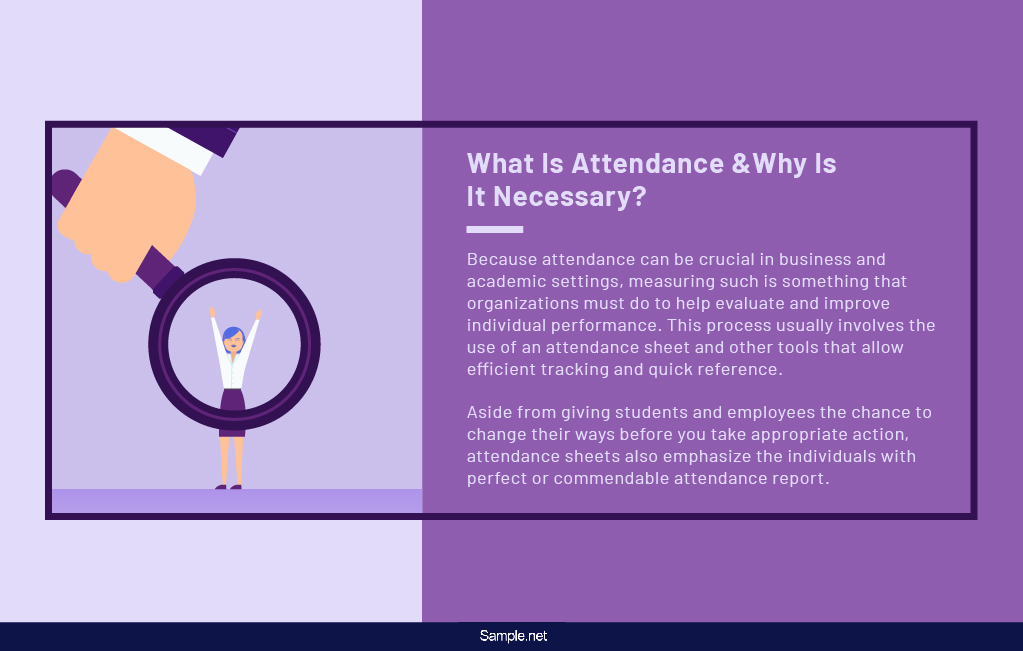
Benefits
Aside from giving students and employees the chance to change their ways before you take appropriate action, attendance sheets also emphasize the individuals with perfect or commendable attendance reports. Keep in mind that attendance habits do tell you a thing or two about an individual. Although some people have acceptable reasons to miss work or school days, from illness to family obligations, that doesn’t mean you can’t recognize those who do take the extra mile to secure their attendance. The best way to acknowledge this behavior is to offer rewards or incentives that you know they’ll appreciate. You can also see more on Log Sheet.
On the contrary, you can provide feedback to troubled individuals by letting them know about the problem and what needs to change. It might not seem like much to you at first, but lead-tracking attendance can go a long way for everyone in terms of improving one’s attitude and performance.
How Important Is Attendance?
Imagine how there are billions of people in the world, yet only five participants come to the event you’ve been strategic planning for in the past weeks. Low attendance numbers are a waste of time and resources, to say the least, as it doesn’t make up for the amount of effort that one puts into organizing an event. With this in mind, you might ask how important is an excellent attendance record in our day-to-day living?
In Events
67,042—that’s the average number of attendees per game at the National Football League games in 2018, as indicated in a recent survey by Statista. Given how it’s a major sporting event in the U.S., the numbers come as no surprise to organizers and football fans alike. You can also see more on Attendance Lists.
We often determine the success of an event based on its number of attendees. It’s especially crucial for fundraising events that hope to raise money for an important cause. That’s because these events rely on the number of tickets sold for profit—not to mention the attention they draw to the organization and its programs. Generating a good turnout is one reason to send out your fundraising letters as early as possible, primarily for smaller organizations that have yet to make a name for themselves in the community.
The same goes for promotional events for product launches and grand openings. The more people that attend your event, the more exposure it brings to your product and service. But without extensive advertising of these events, you may risk putting your brand strategy in a bad light in the eyes of consumers. There’s nothing more embarrassing than hosting an event with only a handful of attendees at the venue. Organizing an event that people will want to go to is far from easy, so be sure to pull all the strings necessary to make it happen.
In School
How important is it for students to come to school?
Students, regardless of their year or age brackets, generally despise the idea of getting up early in the morning for class. It’s not a groundbreaking discovery for any instructor to find out why unexcused absence rates are quite high on certain days of the academic year, primarily during exam weeks and after the holidays. But when the average percentage of students attending school each day reaches an all-time low, it also says a lot about the school’s efforts to keep its students engaged. For this reason, implementing various programs that may help drive better attendance rates is essential for the sake of every student’s development plan.
Note that the more days that students come to class, the more likely they are to succeed academically. That’s because frequent absences make it difficult for a student to catch up on lessons and progress in specific areas of learning. Students with low attendance rates are also at risk of causing problems in the community, especially if their time and attention go toward vices and acts of misconduct. Hence, it’s a must for school administrators and instructors to ensure a welcoming environment for students and conduct regular monitoring of class attendance. You can also see more on Employee Attendance Records.
In the Workplace
A good attendance record is a reflection of who you are as an employee. Not only does it speak about your work credibility, but it also puts you in good standing with your superior. That’s because excessive or unauthorized absenteeism is never a good thing in the workplace. In fact, the Bureau of Labor Statistics reports the absenteeism rate in 2018 at 2.8% on regular workdays. If you happen to see these numbers skyrocket in your company’s attendance sheet, you have a reason to be alarmed. Circumstances like this could potentially lead to low productivity scores and reduced overall performance. Thus, imposing strict policies directed toward this behavior is essential to keep employees accountable for their behavior. You can also see more on Tracking Sheet.
So as an employee, you need to be aware of the consequences that absenteeism and tardiness could bring to your current employment records and future job opportunities. You’ll be surprised by how your actions could easily influence what happens down the line. After all, no employer would want to have someone with a poor attendance history as part of their workforce, regardless of the skills they possess or the knowledge they have in a particular field.
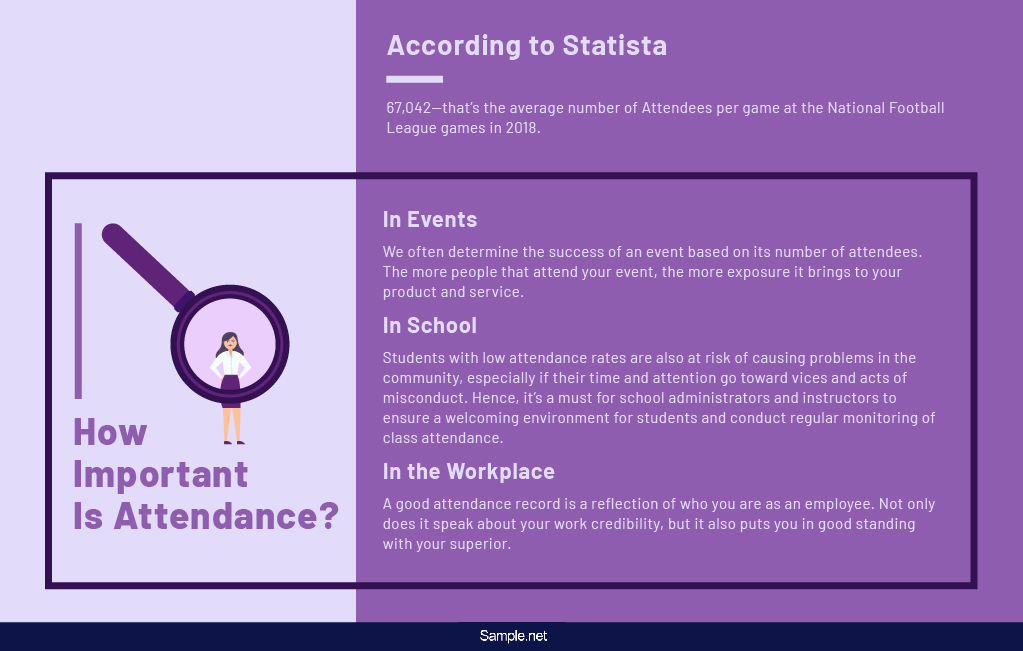
Key Factors that Affect Attendance
There are many things that may influence your attendance rate, including the circumstances that go beyond your control. Below we discuss the different factors that may help us understand the reasons behind low attendance numbers and what we can do to improve them. You can also see more on Leave Trackers.
How to Create an Attendance Sheet
Step 1: Select the Format
Decide whether you want a manual or digital attendance sheet. If it’s manual, you can use a printed paper form. For digital, tools like Microsoft Excel, Google Sheets, or specialized apps are suitable. Your choice should depend on the context, resources, and ease of use.
Step 2: Design the Layout
Begin by adding necessary columns, such as Name, Date, Time, and Status (e.g., Present, Absent, Late). Include additional columns like ‘Remarks’ if needed. For digital sheets, use headers to separate each column, making the sheet visually organized and easy to read. You can also see more on Employee Vacation Trackers.
Step 3: Add Initial Data
If you know the participants in advance, pre-fill the names in the list. For digital sheets, use dropdown options or checkboxes to make marking attendance simpler. Ensure space for writing manually if it’s a printed sheet.
Step 4: Customize for Your Needs
Incorporate any specific requirements, such as adding rows for comments or multiple date columns for longer tracking. Apply conditional formatting for digital sheets to highlight absent or late records, making it easy to review attendance status at a glance. You can also see more on Vacation Trackers.
Step 5: Distribute and Record Attendance
Share the attendance sheet with responsible individuals or set it up for public access in meetings or events. For digital sheets, set permissions to ensure data integrity. Regularly review the sheet to identify patterns and update records accurately.
An attendance sheet is more than just a record-keeping tool; it plays a crucial role in ensuring accountability, improving punctuality, and providing data for decision-making. By adopting both manual and digital versions, organizations can enhance their tracking processes. Consistent use of attendance sheets helps identify participation trends and fosters a culture of reliability and discipline. You can also see more on Weekly Work Schedule.
FAQS
What is the primary purpose of an attendance sheet
An attendance sheet is primarily used to track and record the presence of individuals at a specific event, meeting, or workday, ensuring compliance and accountability.
Can an attendance sheet be digital
Yes, attendance sheets can be maintained digitally using software like Excel, Google Sheets, or attendance management tools, offering better accessibility and data analysis.
How often should an attendance sheet be updated?
Attendance sheets should be updated daily or whenever an event or meeting takes place to maintain accuracy and ensure up-to-date records.
Are attendance sheets legally required?
Yes, in many workplaces and educational institutions, maintaining attendance records is a legal requirement to ensure compliance with labor laws or academic regulations. You can also see more on Data Sheet.
How can an attendance sheet improve employee performance?
By tracking attendance regularly, managers can identify patterns of absenteeism or tardiness and address them early. This helps employees become more accountable, punctual, and engaged, ultimately boosting overall productivity.
What are the benefits of mobile app-based attendance sheets?
Mobile app-based attendance sheets enable real-time tracking, are user-friendly, and support remote work environments. They also offer features like notifications and integration with HR software. You can also see more on Evaluation Sheet.
